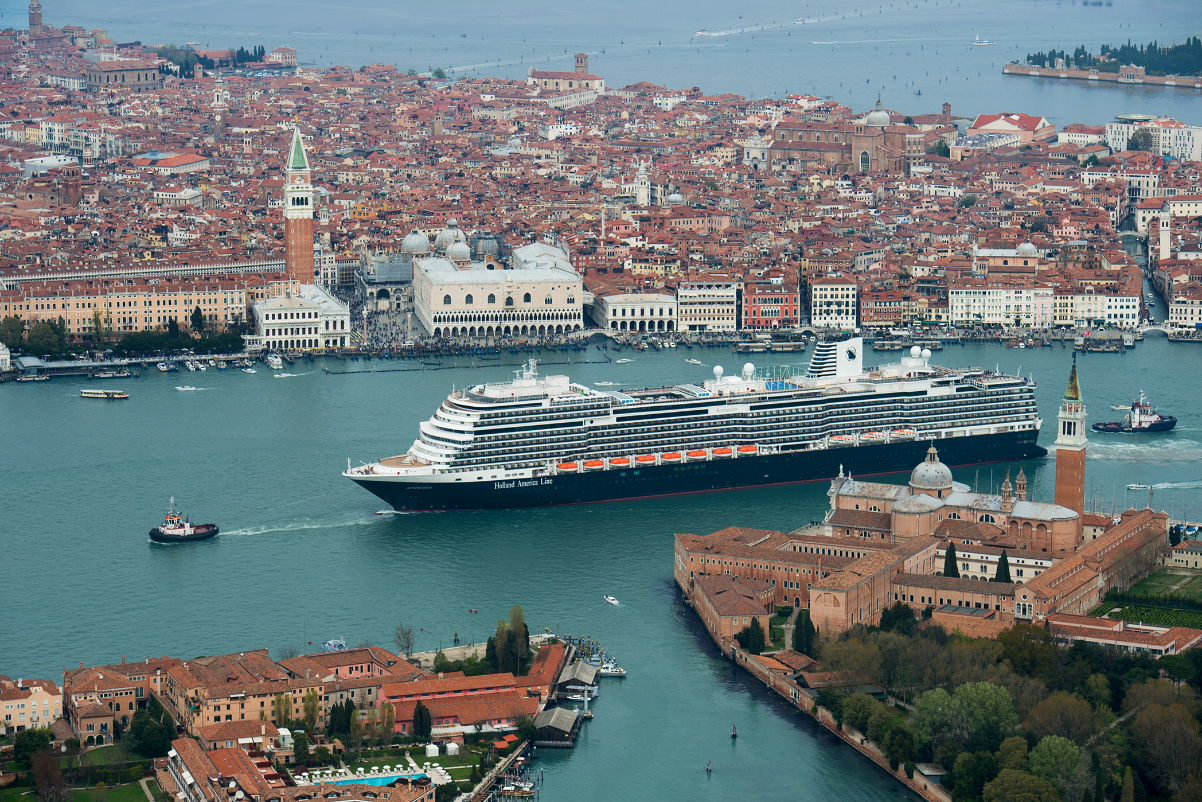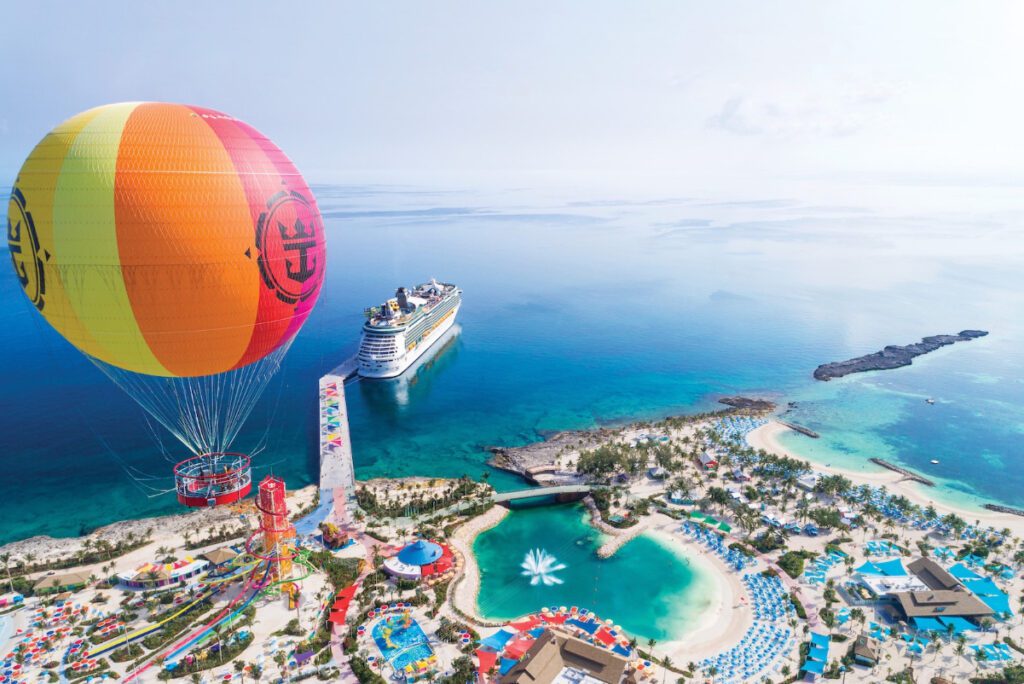Carnival Heads Into 2025 With Record Bookings at Higher Prices

Skift Take
Carnival Corp. CEO Josh Weinstein just wrapped up a banner year of record-breaking financial performance.
"We delivered another stellar quarter to close out a phenomenal year," said CEO Josh Weinstein during an earnings call on Friday.
Now Weinstein's plotting an ambitious course for 2025 that includes the debut of a half-billion-dollar private island destination and sustained premium pricing — all while navigating headwinds from Mexican tax proposals to Red Sea itinerary disruptions.
The world's largest cruise operator said Friday it had notched records for revenue and net income this year. Revenue for the 12 months through November 30 reached $25 billion, up 15% year-over-year, while net income hit $1.9 billion.
Weinstein expects another banner year in 2025, thanks what are so far "record booking trends and record customer deposits," with earnings growth of about 20%.
The tailwinds are clear. Demand is surging, with record-high bookings for 2025 at higher prices and a record pace for bookings two years out despite higher prices.
Improving Operations
Perhaps Carnival's most impressive story in 2025 is how it managed to boost its yield—a key industry metric measuring revenue per berth—by almost 10% on a same-ship basis in 2024.
That's remarkable for a company that historically lagged rivals' growth rates. Weinstein's focus on commercial execution — from revenue management to marketing — appears to be paying off. Both new-to-cruise and repeat guests rose double digits in 2024.
Net yields are projected to grow 4.2% in 2025, well above historical rates.
"All the things we're investing in, in advertising and revenue management, should help drive yields higher over time as well as the [private] destination strategy," said David Bernstein, CFO and chief accounting officer at Carnival Corp.. "So we do expect to see a continued improvement in margins."
Meanwhile, costs are being kept in check, expected to rise just 3.7%.
Yet Carnival only projects 4.2% yield growth for 2025, a significant deceleration. Analysts on an earnings call had several questions wondering whether the operator's "phenomenal" growth of 2024 was more about market conditions than sustainable operational improvements, or if management was being conservative in its forecasts to give it a chance to look more impressive if it can actually beat its own forecasts later.
"There's only one thing I know about every forecast, it's wrong — I just don't know by how much and in what direction," Bernstein said.
A Bet on Private Destinations
Carnival's next leg of growth requires more than operational blocking and tackling. It needs to grow its ability to sustain and boost demand despite not adding much capacity. This year it added three ships, making it 9% larger than in 2019, but it doesn't have much additional supply coming on in the near term.
Carnival is betting big on owned "private destinations" like the new Celebration Key opening in July 2025 to help drive incremental gains in revene and margin.
These beachy ports can only be accessed by Carnival ships and whose shops and restaurants are fully run by Carnival are a way to differentiate from land-based vacations and drive pricing power. (See Skift's story this month on private destinations.)
The strategy may pay off over time. Only 5% of 2025 sailings will visit Celebration Key, rising to 15% in 2026.
On Thursday, the company said it would expand the port so that it can fit more types of Carnival ships and boost the number of guests who can visit. The company also revealed it was rebranding Half Moon Cay as RelaxAway, Half Moon Cay, to better market the experience.
It won't be until the next year after its opening that there will be concrete data showing its new private destination actually drives higher yields versus a traditional port.
Rosy Forecast
Carnival's stellar performance comes amid a broader travel boom, with consumers splurging on experiences after pandemic lockdowns. The company's projections assume this strength continues.
Yet economic headwinds — from stubborn inflation to geopolitical tensions and a possible tariff war impacting supply costs — could test travelers' resolve.
Executives tout operational improvements, which they say will help drive gains, and that they're not just benefiting from favorable market conditions.
Debt Is Still High
But here's the sobering splash of seawater: They're still lugging around $27.5 billion in debt. Yes, they've cut $8 billion since early 2023 thanks partly to refinancings. But their leverage ratio is still a queasy 4.3x net debt to EBITDA.
The company is still far from investment-grade territory, which means it pays higher-than-necessary interest to service its debt. Until Carnival significantly lightens its debt load, it's at the mercy of consumers' willingness to keep splashing out on cruises at a higher-than-usual pace.
For now, the cruise operator is sailing with the wind at its back. Its 2025 guidance of 4.2% yield growth looks achievable given two-thirds of capacity is already booked at higher prices. The real question is whether Carnival can sustain premium growth rates as comparisons get tougher.
"We have a tremendous amount of headroom remaining to create more demand to cultivate more guest loyalty and capture more pricing," Weinstein said.
In a report, William Blair research analyst Sharon Zackfia said that investors should "expect deleveraging to ramp up in earnest next year, as free cash flow materially increases on fewer new ship deliveries."
Mexico Uncertainty
Weinstein said a proposed Mexican tax on cruise passengers is not finalized and the company is in ongoing discussions with Mexican officials about the measure.
Tax implementation has been delayed to July 1, but Carnival is "not satisfied with that."
The CEO believes Mexican President Claudia Sheinbaum Pardo was "misinformed" about ramifications.
He said less than 5% of Carnival's 2025 itineraries would be potentially affected if the tax was implemented, and said itineraries could be adjusted to "effectively erase" impact of the proposed tax.
Red Sea Impact
Geopolitical tensions in the Middle East, including Houthi rebel attacks on ships passing through the Red Sea, led to Carnival and other cruise lines avoiding the Red Sea. The re-routings cost the company about $90-100 million in 2024, executives said.
For 2025, the re-routings meant selling alternative routes that, Weinstein said, were "weren't necessarily as attractive to sell because you can't go through the Red Sea."
Cruise and Tours Sector Stock Index Performance Year-to-Date
What am I looking at? The performance of cruise and tours sector stocks within the ST200. The index includes companies publicly traded across global markets including both cruise lines and tour operators.
The Skift Travel 200 (ST200) combines the financial performance of nearly 200 travel companies worth more than a trillion dollars into a single number. See more cruise and tours sector financial performance.






